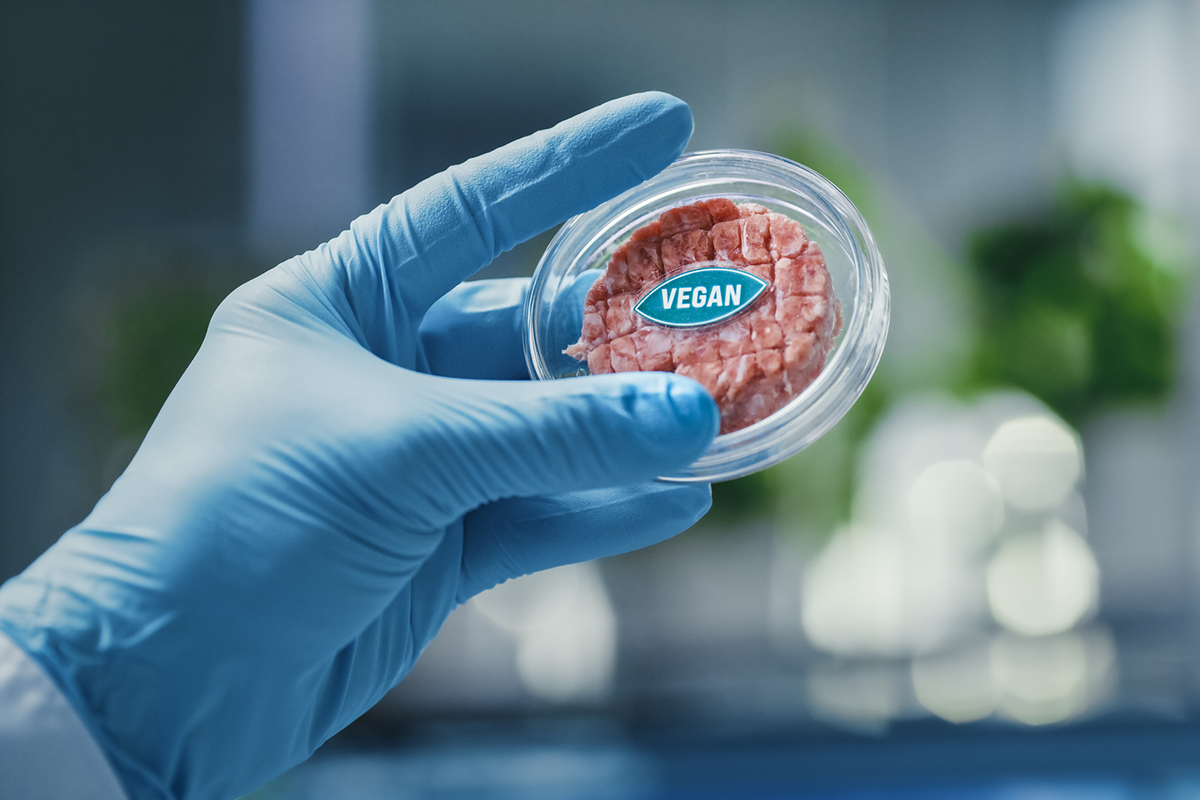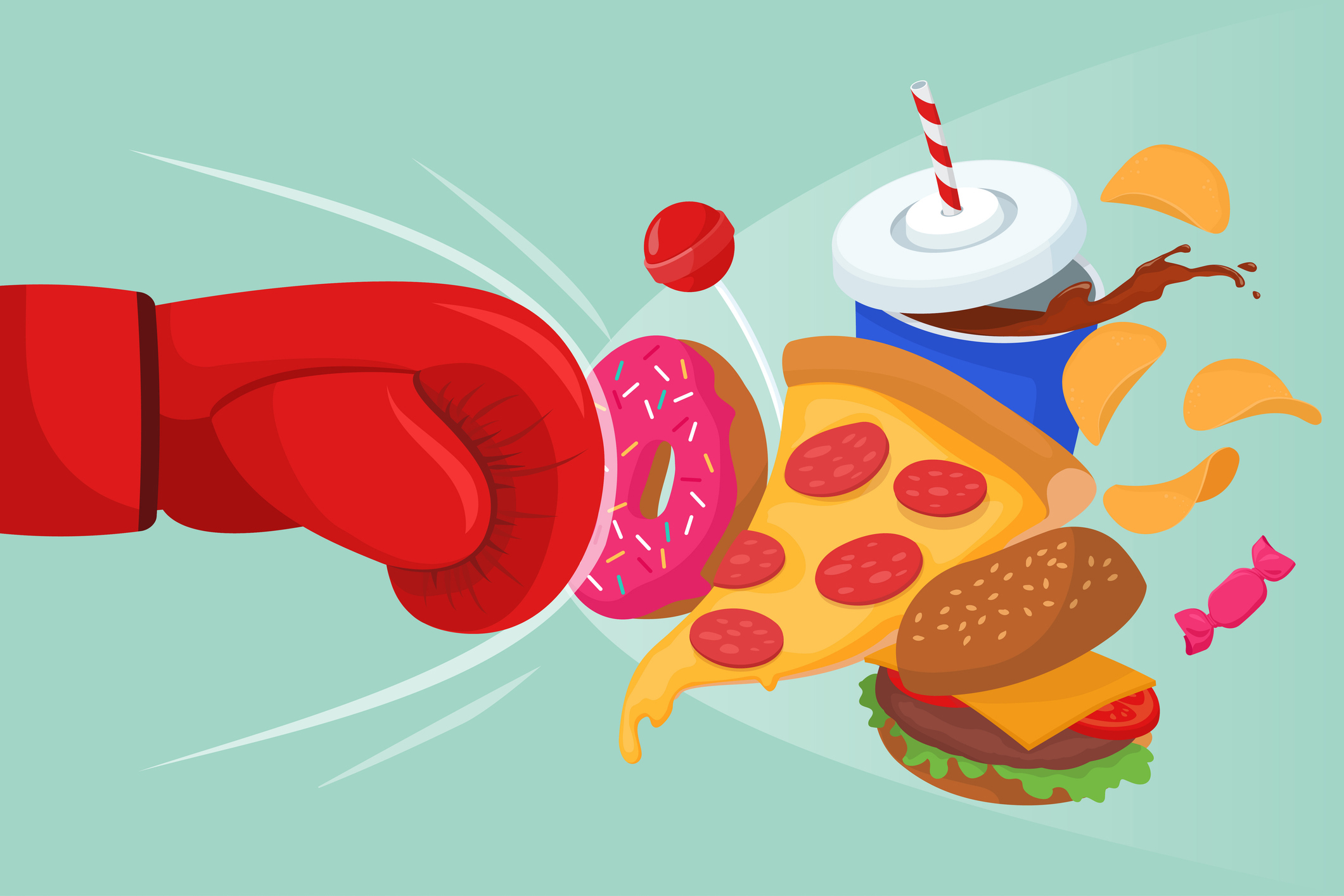The 1973 sci-fi movie Soylent Green depicts a dystopian future in which over-population and environmental degradation threaten widespread famine. The solution to looming starvation is Soylent Green, a commercialized product harvested from sea plankton.
The character Sol (portrayed by Edward G. Robinson is his final movie role) complains to Detective Thorn (Charlton Heston):
Sol: [seeing the steak that Thorn has brought home, breaking down in tears] How did we come to this?
Sol: You know, when I was a kid, food was food. Before our scientific magicians poisoned the water, polluted the soil, decimated plant and animal life.
Sol: Why, in my day, you could buy meat anywhere! Eggs they had, real butter! Fresh lettuce in the stores.
Detective Thorn: I know, Sol, you told me before.
Sol: Tasteless, odorless crud. You don’t know any better.
But ocean pollution is threatening the plankton supply, and to make up for it, the makers of Soylent Green have added a secret ingredient: People! Detective Thorn uncovers an insidious plot to encourage people to undergo voluntary euthanasia, supplying a ready source of protein while reducing population pressure.
Unlike Soylent Green, lab-grown meat is a solution in search of a problem. Worries over world over-population, in vogue in the mid-20th century, are now superseded by concerns over declining birth rates in industrialized countries. Economists worry about shrinking tax-paying workforces supporting surging numbers of aged retirees.
So a new peril has been conjured, that of planetary extinction due to climate change. While most emissions are due to dependency on fossil fuels, there’s now a hue and cry about the greenhouse gas contribution from animal protein production, the extent of which remains controversial.
The EAT Lancet report states “a radical transformation of the global food system is needed”. It calls for a reduction of average daily meat consumption to just 14 grams. That’s half an ounce!
Environmentalists despair over the prospect of enlisting altruism as a way of getting people to give up meat; most people don’t want to become vegans.
Moreover, a recent analysis of the proposed “planetary health diet” highlights its impracticality:
“We find that the EAT–Lancet planetary health diet could fall short in multiple micronutrients. Deficiencies in these micronutrients would contribute to substantial public health burdens compared with what would be achievable for a fully nourished population. This new evidence suggests a planetary health diet consisting mostly of minimally processed, healthy plant source foods that is low in animal source foods should not necessarily be assumed to provide adequate nutrients, particularly for minerals such as iron (especially for women of reproductive age), calcium, and zinc. We estimate that to achieve dietary nutrient adequacy (without relying on supplementation or fortification) at the population level requires increased quantities (from the baseline planetary health diet) of nutrient-dense foods such as fish, shellfish, seeds, eggs, and beef; and reduced quantities (from the baseline planetary health diet) of foods high in phytate such as whole grains, pulses, and nuts.”
One solution for climate-conscious individuals Jonesing for their hot dogs, hamburgers, and chicken nuggets is faux meat made entirely from plant sources. They purport to be the nutritional equivalents of their animal protein antecedents. But a recent headline asserts: “Vegan fake meats linked to heart disease, early death: study.” The research cited is based on the diets of thousands of UK subjects. While a diet high in plant foods—fresh produce, whole grains, nuts and legumes—was found to confer health benefits, its benefits turned to liabilities when the plant food sources were ultra-processed, as are the new generation of ersatz meats:
“Every 10 percentage points increase in plant-sourced non-ultra-processed consumption was associated with a 7% lower risk of cardiovascular disease and a 13% lower risk of cardiovascular mortality. Conversely, plant-sourced ultra-processed consumption was associated with a 5% increased risk and a 12% higher mortality.”
Moreover, a recent study demonstrated that it takes two soy-based meat alternative patties to replicate the muscle-building benefits of one conventional meat patty.
Impossible Foods recently announced layoffs for 20% of their workforce amid cratering demand. Beyond Meat stock, once a darling of investors, peaked at nearly 200 in 2021, and is now trading at 6.
The surest paths to wealth accumulation and concentration these days are so-called “disruptive” technologies. These have replaced restaurants with clickable food delivery apps; small retail stores with online behemoths; travel agents with discount trip apps; pharmacies with online dispensaries; the post office with email and texts; casinos, neighborhood bookies and numbers runners with online betting and lotteries; optometrists and audiologists with DIY eyeglass dispensers and Apple AirPods; eventually doctors with ChatGPT. Meat production is the next target for disruption.
The threat of planetary extinction has conjured an entirely new energy economy bonanza incorporating EVs, solar panels, windmills, and biofuels whose uptake has been less dependent on efficiency and reliability than on government diktats.
So, too, with lab-grown meat, which can’t succeed on its own merit, but would require massive regulatory and tax incentives to become sustainable—if it were even to achieve palatability.
The idea is to short-circuit the messy process of animal husbandry and meat-processing with a fully-automated system that cultures animal cells in “bioreactors”—giant nutrient vats.
The challenge is that, unlike animals, individual cells lack an intact immune system to combat infections. A single errant bacterium, fungus, or virus could contaminate a batch of millions of pounds of lab-grown meat, resulting in the need to throw out all the product, and clean and re-sterilize a plant’s entire labyrinth of pipes, valves and holding tanks.
There’s also the question of the ideal growth medium. So far, it’s derived from bovine serum—collected from the unborn fetuses of slaughtered cows. On the margins that might reduce the need for cattle herds, but it doesn’t supplant traditional livestock.
A recent analysis sought to price out a best-case near-term scenario for lab-grown meat. It found:
“Assuming that technology will be developed to reduce the cost of the medium including growth hormone substitutes and buying ingredients in bulk, 1 kg of cell-cultured meat is estimated to cost $63/kg to produce in a large-scale facility.”
Another analysis concludes:
“Low growth rate, metabolic inefficiency, catabolite inhibition, and shear-induced cell damage will all limit practical bioreactor volume and attainable cell density. Equipment and facilities with adequate microbial contamination safeguards have high capital costs. The projected costs of suitably pure amino acids and protein growth factors are also high . . . Capital- and operating-cost analyses of conceptual cell-mass production facilities indicate economics that would likely preclude the affordability of their products as food.”
Lab-grown meat is capital-intensive, meaning that billions would need to be invested in R&D and infrastructure. That suits developers who would enjoy exclusive patent protection and massive returns on investment. The industry would supplant small farm owner producers with huge industrial conglomerates, concentrating power in the hands of a few who would wield enormous economic and political leverage.
Who is backing lab-grown meat companies? According to an analysisby the Alliance for Natural Health:
“Tyson Foods, the largest meatpacking company in the US, is an investor in UPSIDE Foods; JBS and Cargill, other giants in the meatpacking industry, have also invested in lab-grown meat. The success of lab-grown meat will only enrich the profits of some of the largest factory farmers in the business. Bill Gates is also an investor in lab-grown meat in addition to plant-based meat. Gates famously saidthat rich countries should switch to synthetic meat—a move from which he stands to gain massively.”
Taste and texture concerns aside, there are doubts about the safetyand nutritional equivalence of “cloned” meat:
“It is also almost impossible to reproduce the diversity of meats derived from various species, breeds and cuts. Although these are not yet known, we speculated on the potential health benefits and drawbacks of cultured meat. Unlike conventional meat, cultured muscle cells may be safer, without any adjacent digestive organs. On the other hand, with this high level of cell multiplication, some dysregulation is likely as happens in cancer cells. Likewise, the control of its nutritional composition is still unclear, especially for micronutrients and iron . . . religious authorities are still debating the question of whether in vitro meat is Kosher or Halal.”
A 2020 review speculates as to whether cultured meat could replicate real meat’s fatty acid composition. Would cells in a bioreactor retain the ability of real myocytes to synthesize important nutrients like creatine?
Finally, while the rationale for lab-grown meat is to protect the environment, some scientists disagree:
“The results indicate that the environmental impact of near-term ACBM [animal cell-based meat] production is likely to be orders of magnitude higher than median beef production if a highly refined growth medium is utilized for ACBM production.”
According to ScienceAlert, the researchers estimated that “cultured meat production could emit between four to 25 times more carbon dioxide per kilogram than regular beef and all its hidden costs, depending on the techniques used.”
Italy recently placed a ban on lab-grown meat, as did the states of Florida and Alabama.
For all the above reasons, lab-grown meat is at best a pricey novelty for signaling virtue, at worst an impractical distraction from the real problems of our wasteful, inefficient, environmentally unsound, exploitative and cruel food production industry.







